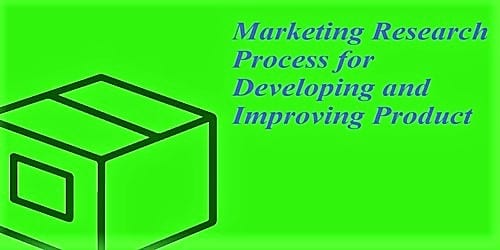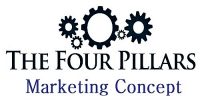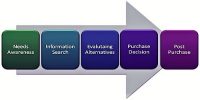The marketing research process is not limited to large companies with big budgets and marketing research departments. The system may be used for ongoing monitoring of the marketplace or on a step by step evaluation of a product concept.
Effective marketing research process follows the five steps shown below:
- Step 1: Define the Problem, the Decision Alternatives, and the Research Objectives
Marketing managers must be careful not to define the problem too broadly or too narrowly for the marketing researcher. A marketing manager who says, “Find out everything you can about first-class air travelers’ needs,” will collect a lot of unnecessary information. One who says, “Find out whether enough passengers aboard a B747 flying direct between Chicago and Tokyo would be willing to pay $25 for an Internet connection for American Airlines to break even in one year on the cost of .offering this service,” is taking too narrow a view of the problem. Experimental research gives you the benefit of calculating irrelevant variables and manipulating one or more variables that manipulate the procedure being implemented.
- Step 2: Develop the Research Plan
The second stage of marketing research process is where we develop the most efficient plan for gathering the needed information and what that will cost. Suppose American made a prior estimate that launching in-flight Internet service would yield a long-term profit of $50,000. If the manager believes that doing the marketing research will lead to an improved pricing and promotional plan and a long-term profit of $90,000, he should be willing to spend up to $40,000 on this research. If the research will cost more than $40,000, it’s not worth doing.
- Step 3: Analyze the Information
The next-to-last step in the process is to extract findings by tabulating the data and developing summary measures. The researchers now compute averages and measures of dispersion for the major variables and apply some advanced statistical techniques and decision models in the hope of discovering additional findings. Information, motivation, and guidance from the marketing world and further than that will help you grow as a marketer and as a leader. They may test different hypotheses and theories, applying sensitivity analysis to test assumptions and the strength of the conclusions.
- Step 4: Present the Findings
As the last step, the researcher presents findings relevant to the major marketing decisions facing management. Researchers increasingly are being asked to play a more proactive, consulting role in translating data and information into insights and recommendations. Internet surveys necessitate fewer workers, are lower cost and can be completed in days rather than weeks or months. They’re also considering ways to present research findings in an understandable and compelling a fashion as possible.
- Step 5: Make the Decision
The American Airlines managers who commissioned the research need to weigh the evidence. If their confidence in the findings is low, they may decide against introducing the in-flight Internet service. Analysis techniques differ and their effectiveness depends on the types of information you are collecting, and the type of measurements you are using. If they are predisposed to launching the service, the findings support their inclination.















